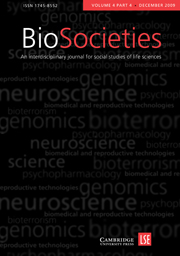Article contents
Testing for Food Intolerance: New Markets in the Age of Biocapital
Published online by Cambridge University Press: 01 March 2009
Abstract
Testing for food allergy/intolerance is a rapidly expanding market. We present an exploration of the efforts of one of the market leading companies in this sector to promote and justify their product in the face of considerable opposition from conventional medicine, as well as a range of alliances with patient groups, so-called ‘lifestyle gurus’ and their customers. In extracting the latent value of an immunoglobin called IgG, testing companies engage with and extend entrepreneurial patienthood and new forms of pastoral expertise in their efforts to identify and manage a group of low-level chronic conditions that resonate with contemporary social unease about the hazards of modernity. Rather than foregrounding novelty and hope, we found that a great deal of emphasis was placed upon establishing conventionality with business practice and scientific method, and relief from the past. We also found that the local circuits and networks of engagement, in which the company operated to secure their reputation and extend their market, were vitally important. We end by reflecting upon the implications of our analysis for contemporary scholarship on biocapitalism.
- Type
- Articles
- Information
- Copyright
- Copyright © London School of Economics and Political Science 2009
References
- 5
- Cited by


